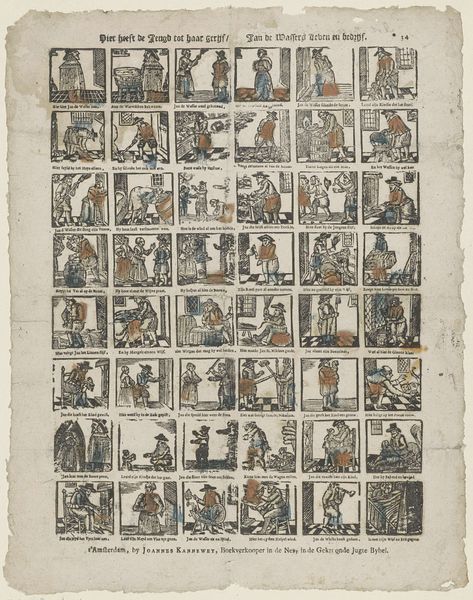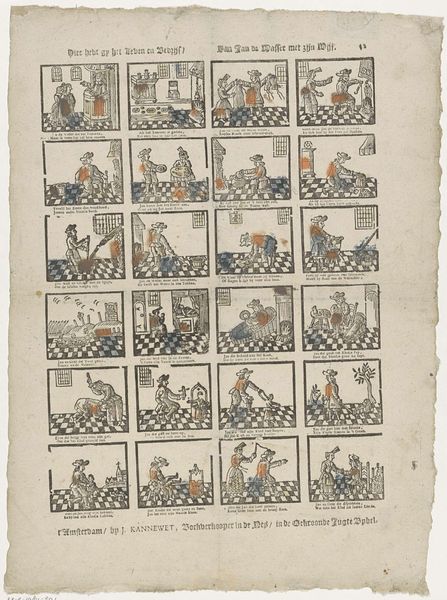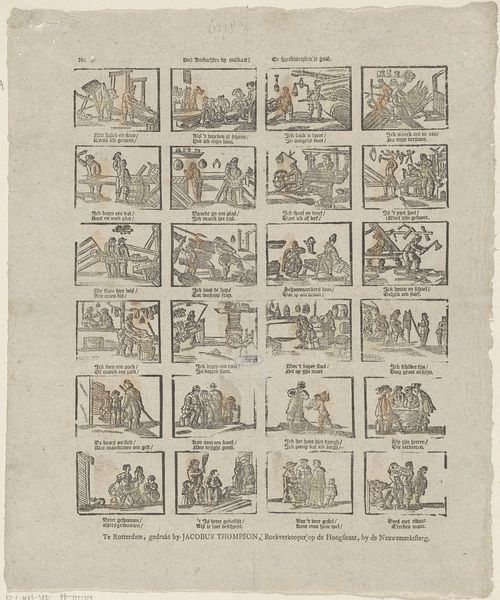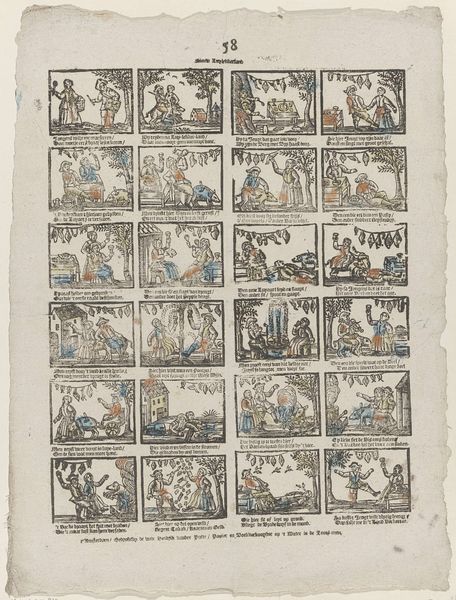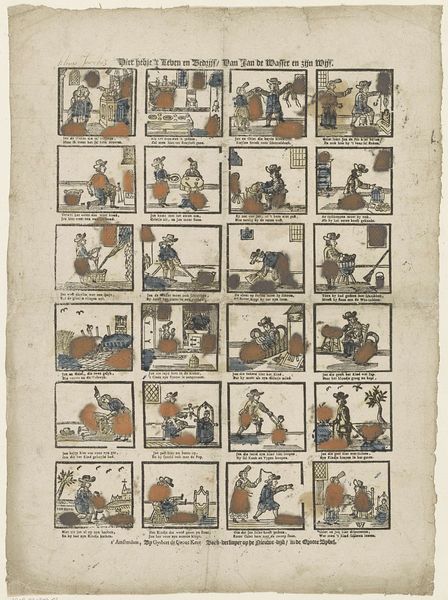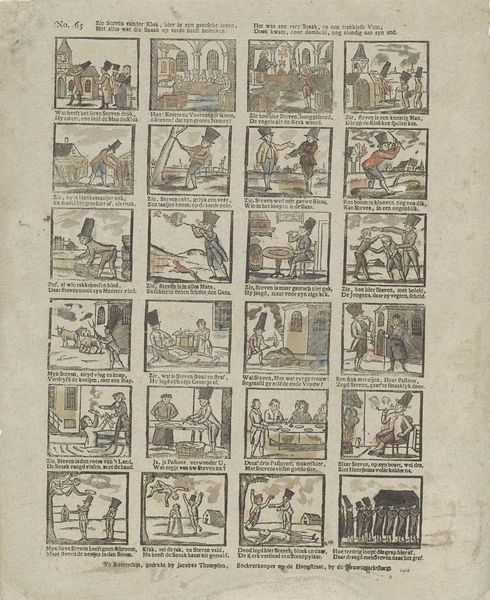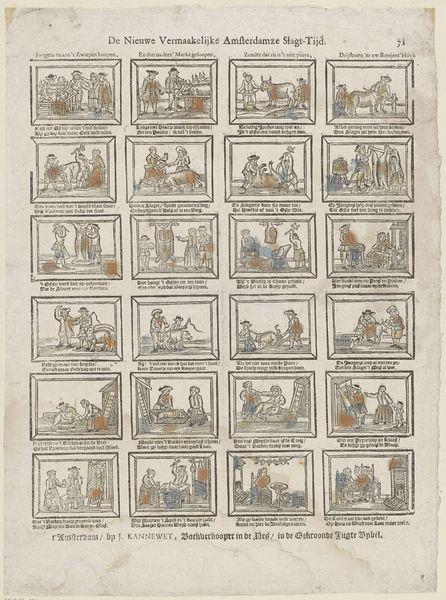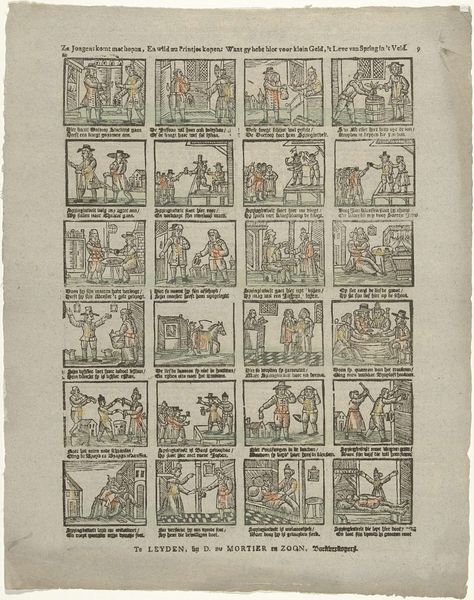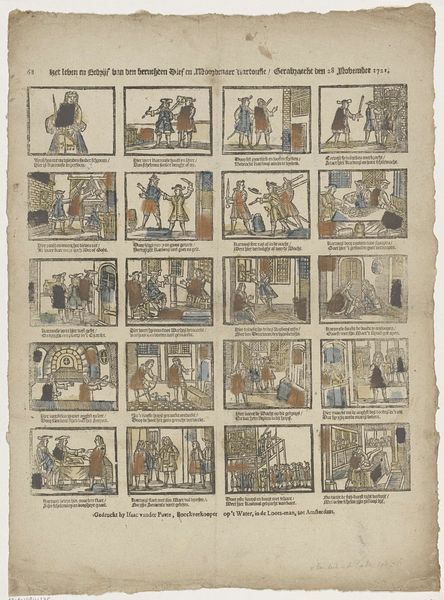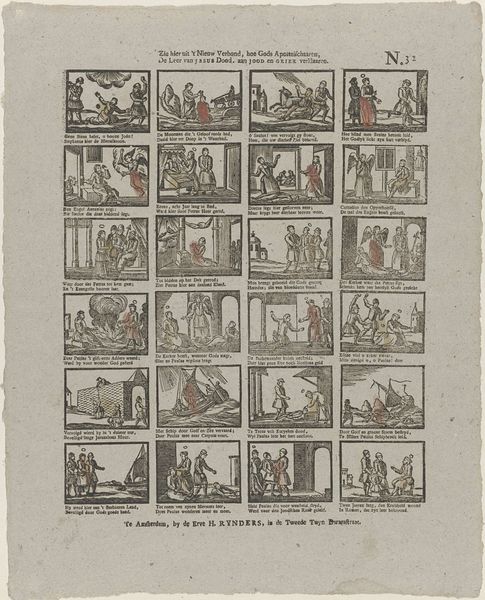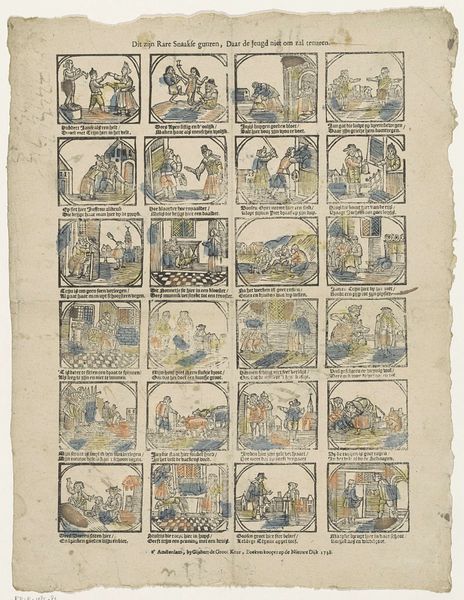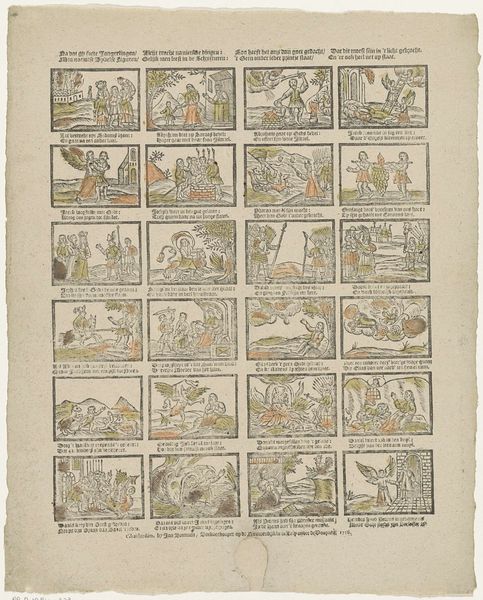
Za jongens komt met hoopen / En wild dees printjes koopen. / Want hier hebje voor u geld / Het leven van Spring in 't Veld 1725 - 1780
0:00
0:00
johannesiikannewet
Rijksmuseum
graphic-art, print, engraving
#
graphic-art
#
comic strip sketch
#
baroque
# print
#
comic
#
genre-painting
#
engraving
Dimensions: height 432 mm, width 313 mm
Copyright: Rijks Museum: Open Domain
Editor: Here we have "Za jongens komt met hoopen," or "The Life of Spring in 't Veld," an engraving by Johannes Kannewet, created sometime between 1725 and 1780. It’s like a little comic strip, almost! I'm curious about how we should interpret all these tiny scenes. What stands out to you? Curator: What immediately strikes me is the deliberate ordering of images, like panels in a story. We should ask ourselves what the cultural function of this 'comic' might have been in its time. Notice the title itself: 'The Life of Spring in 't Veld' — a very suggestive name! The visuals remind us of the *Stilespiegel*, a character who appeared in emblem books of the 16th and 17th centuries and taught moral lessons. Do you see any parallels here? Editor: I hadn’t thought of that, but now that you mention it, some of the scenes *do* seem cautionary. Like, there's a panel where a figure seems to be gambling and then another where someone is getting beaten. Curator: Exactly! We must consider the historical context. This was a time when popular prints disseminated moral messages. Also consider Kannewet’s choice of engraving—the linearity and replicability served didactic functions. What psychological effect did these narratives, reproduced and circulated widely, have on society? Editor: So, beyond just being entertaining, this piece reflects and shapes cultural values of the time through recognizable symbols and stories? Curator: Precisely. The imagery reinforces existing cultural memory while simultaneously solidifying those values for future generations. Think about the emotional resonance of the figures' gestures, too; they carry layers of inherited cultural meaning. Editor: That's a completely different way of viewing this! I originally just saw it as a quaint precursor to comics, but now I appreciate it as a powerful, symbolic representation of its time. Curator: And seeing that interplay is why it's so fulfilling to study art.
Comments
No comments
Be the first to comment and join the conversation on the ultimate creative platform.

